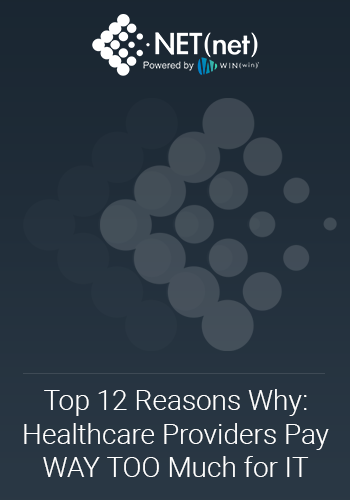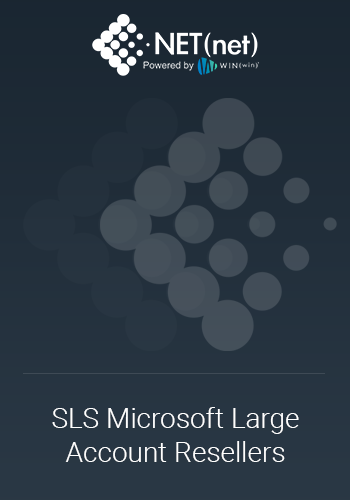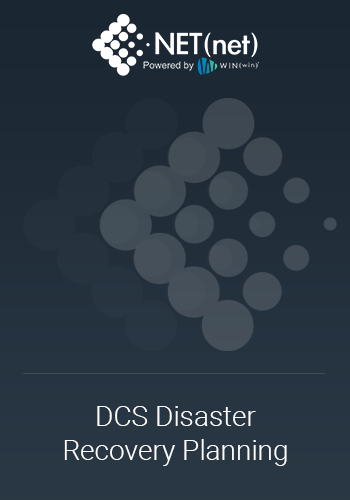Preface
Thank you for joining us for this 3-part series on Cloud Costs, where we explore the Top 5 Price Shock Phenomenon’s of Cloud costs, resulting in part from the Top 5 Workloads that are NOT Well Suited for the Cloud, and largely resulting in the Top 5 Reasons Why Clients Are Repatriating previously migrated Workloads from cloud deployments back on-premises:
- Part 1 (Feb 15): Top 5 Price Shock Phenomenon’s of Cloud Costs
- Part 2 (Mar 15): Top 5 Workloads that are NOT Well Suited for the Cloud
- Part 3 (Apr 15): Top 5 Reasons Why Clients Are Repatriating Workloads (This One)
Part 3: Top 5 Reasons Why Clients Are Repatriating Workloads
In recent years, cloud adoption has been one of the most significant trends in the IT industry. Up until late 2020, client organizations have been increasingly migrating their workloads to the cloud to take advantage of its scalability, flexibility, and cost-effectiveness.
However, since late 2020, cloud migrations have slowed, and since early 2022, there has been a growing trend of businesses actually repatriating previously migrated workloads from the cloud back to on-premises environments. The cause of this trend is not immediately obvious, but it's clear that it stems from changes in business models, privacy laws, technology, and economics (among other factors). We're still seeing client organizations migrate workloads to the cloud disproportionately when compared to legacy data center deployments, but many are now also moving select workloads out of the cloud as well. This blog will discuss the Top 5 reasons for this trend of workload repatriation as well as the potential implications for client organizations and cloud providers alike.
Evolution in Cloud Adoption
In the very recent past, it was common for companies to adopt a cloud-first strategy and move their applications to public clouds; almost by default. Today, that approach is changing.
Cloud repatriation (the act of moving previously migrated cloud workloads back to on-premises servers) is not a new phenomenon; in fact, it's been happening since before we even knew what "cloud" meant (think “timesharing” during the mainframe era). But as companies continue their digital transformation initiatives and find that not all applications are well suited for the public cloud model, more organizations are starting to rethink their use of public clouds and explore alternative options such as multi-cloud environments, hybrid cloud models, private clouds, and yes even repatriation of cloud workloads back to on-premises data center environments.
Reasons for Repatriation
One of the primary reasons for repatriation is the cost of cloud services. Although the cloud is often considered more cost-effective than on-premises solutions, this is not always the case. Some organizations find that cloud costs can quickly add up, particularly when their usage increases over time. In some cases, organizations may also experience unexpected costs due to issues such as data egress fees, which can make cloud services more expensive than anticipated. As a result, some businesses are opting to repatriate their workloads to on-premises environments, where they have more control over costs.
Another reason for repatriation is data sovereignty and compliance concerns. In some cases, organizations may need to store sensitive data in specific locations or meet specific regulatory requirements, which can be challenging in the cloud. Repatriating workloads to on-premises environments can give organizations more control over their data and ensure compliance with regulations.
Finally, some businesses have experienced performance issues in the cloud. Although cloud environments can be highly scalable, they can also be prone to latency and other performance issues, particularly when workloads are unpredictable. Repatriating workloads to on-premises environments can provide businesses with more control over their infrastructure and enable them to optimize their workloads for performance.
The Top 5 Reasons for Workload Repatriation
It's a trend. Many client organizations are considering repatriating previously cloud-migrated workloads back on-premises. But why?
- Business Model. The cloud is not a panacea for all business needs nor is it a one-size-fits-all solution and it's certainly not the right choice for every workload, no matter what the marketing brochures say. Moving your workloads to the cloud should be done with careful consideration of your specific requirements and workloads, as well as how they will integrate with other parts of your business infrastructure (or lack thereof). In order to make informed decisions about where and how best to host your applications and data, you need an experienced partner who understands both sides of this equation: both how businesses work today vs. how they might work tomorrow; both what they need now vs what could be useful in future iterations; both where current technology stacks fall short vs where new technologies may offer potential breakthroughs. This is where we come in. NET(net)’s subject matter experts will work with you closely to understand your business requirements and can help you make informed decisions about which workloads should stay on-premises and which should be migrated to the cloud all in an effort to help you minimize cost and risk, and maximize the realization of value and benefit.
- Changing Technology Needs. Cloud providers are not always able to keep up with the speed at which technology is changing. Clients want to use new technologies like AI and machine learning, but they're not sure whether their cloud providers can fully support them in the ways that are most meaningful. As a result, cloud providers are investing in new infrastructure and tools to stay competitive. Cloud companies have been adding services at a rapid pace, but that comes at a cost: They need money for research and development, as well as the physical infrastructure needed for those services (such as data centers). As these costs increase, some customers may find it easier, cheaper, and/or faster to build out their own solutions instead of paying for public ones--which could threaten the viability of many cloud providers' business models.
- Security: Concerns over the security of public clouds have been rising steadily, with many organizations citing a lack of visibility into their data as reason enough to move it back under their own control. This also applies to regulatory compliance requirements such as GDPR and HIPAA/HITECH, which require certain types of data be stored on-site or within borders where laws apply--and that means no offshoring it to foreign countries like India or China where there may not be adequate legal protections for sensitive information like health records or financial details.
- Performance: Some clients are finding that their cloud deployments may not meet the performance requirements of their more critical applications. Cloud deployments are typically accessed over a network, which may introduce additional latency and bandwidth constraints that can impact application performance. In addition, the physical location of cloud data centers may be farther away from end-users or on-premises infrastructure, which can lead to increased latency and reduced performance. Further, cloud deployments often share underlying physical resources, such as servers and storage, with other customers which can lead to variable performance, depending on the workload demands of other customers. As well, cloud deployments often use virtualization to enable the sharing of physical resources, which can add overhead and reduce performance compared to on-premises deployments that run directly on dedicated hardware. Finally, some applications may be better suited for on-premises deployment due to their architecture, data access patterns, or performance requirements. It's worth noting that these factors may not be significant concerns for all workloads, and in many cases, cloud deployments can offer superior performance and scalability compared to on-premises deployments.
- Cost: While most cloud providers offer some kind of self-service toolset for managing resources like storage capacity and bandwidth usage, sometimes these tools aren't enough--especially when dealing with larger datasets (such as those used in streaming media applications) that can quickly get out of hand without proper management strategies in place beforehand. The known cost of running a cloud-based service is usually much lower than maintaining your own infrastructure in the initial assessment, however, there are often hidden costs and added charges associated with cloud consumption that can add up over time and even make cloud deployments more costly.
The Changing View of Cloud
Cloud workload repatriation is the main cause of cloud migration slowing down. The number of businesses migrating their workloads to the cloud has slowed in recent years, as businesses have become more aware of the potential business, economic, and/or technical risks associated with migrating workloads to the cloud.
Businesses are also looking for ways to reduce costs and improve performance for their existing systems, rather than just moving them over to a new platform that might not be equipped to handle their needs. There are many different reasons why this shift is happening:
- Cloud providers aren't keeping up with technology fast enough: Some companies have found that even though they need more resources than what's available through public clouds like Amazon Web Services (AWS), there aren't any viable options for scaling up outside of AWS itself.
- Security concerns have increased over time: Increasingly stringent regulations like GDPR have made it harder for organizations worldwide who collect personal information from EU citizens (which includes most businesses) while also increasing awareness about privacy issues generally among consumers worldwide.
The cloud is not a panacea that solves every workload problem: While the cloud may be an excellent solution for many businesses, it doesn't work for everyone. Some client organizations prefer to keep their data on-premises or in a hybrid environment where some resources are hosted off-site while others remain on-premises.
The cloud has a steep learning curve: While it's easy to sign up for an AWS account, figuring out how to use the service effectively can be difficult, and the learnings often only come after expensive “price shock” lessons have been learned (as we discussed in part 1 of this 3 part series).
It's important to remember that cloud services are only as good as the people who use them. The wrong implementation can lead to security gaps and other problems that may be difficult to fix later on.
Implications for Client Organizations
The trend toward repatriation has significant implications for client organizations. On the one hand, it can give businesses more control over their infrastructure, costs, and data. On the other hand, it can be strategically anti-thetical and therefore political, as it can also require significant investment in on-premises infrastructure and IT resources, which can be challenging for smaller organizations.
For larger organizations, the trend towards repatriation may lead to a hybrid approach to infrastructure, where some workloads are kept in the cloud, while others are kept on-premises. This approach can give businesses ‘the best of both worlds’, enabling them to take advantage of the scalability and flexibility of the cloud, where it makes the most sense, while maintaining stronger control over their infrastructure and costs where workloads are better suited for on-premises processing.
Implications for Cloud Providers
Cloud repatriation has implications for the cloud providers such as AWS (Amazon Web Services), (Microsoft) Azure, and GCP (Google Compute Platform) among others. To stay competitive, cloud providers need to offer more control and flexibility, better security, better pricing, and improved SLAs.
Cloud providers also need to be more transparent about their data centers’ locations and security. They also need to offer customers the option of storing their data on-premises in their own facilities, rather than just in the cloud.
Customers need to demand that their cloud providers offer the above-mentioned features and services. They also need to be more aware of where their data is being stored, and they need to understand the security implications of storing data in certain locations.
The cloud is a wonderful delivery mechanism. It enables us to access our data and applications from anywhere, at any time, on any device. Cloud enables us to quickly scale up or down our computing power, data transfer rates, and storage requirements as needed, but where cloud struggles is with data-intensive and performance-centric processing requirements, as well as those environments where high levels of security is essential, but to the largest degree, cloud is consumption based, and often surprises customers with shocking bills about the consumption of resources that are often not at all related to the value of the use.
As a result, until cloud providers can successfully overcome these and other challenges, they will continue to struggle with adoption and the increasing trend of workload repatriation.
Conclusion
The trend towards cloud workload repatriation is a significant recent development in the IT industry, reflecting the challenges and opportunities of cloud adoption. While the cloud has brought many benefits to client organizations, it is not always the best solution for every business and certainly not for every workload. As a result, businesses are increasingly adopting a hybrid approach to how they manage infrastructure, combining the benefits of the cloud with the control of on-premises environments. Ultimately, the decision to place workloads will depend on the unique requirements and strategy of each organization, and it is essential to carefully evaluate the costs, benefits, and risks of each approach.
Stay Tuned
Thank you for staying with us for this 3-part series. Stay tuned for next month’s wrap up and forecast for the remainder of 2023.
Summary
Cloud costs have gotten out of control for many AWS, Azure, and Google customers, forcing them to repatriate workloads back on-premises; yet NET(net) clients routinely save 13-53% on their cloud costs.
Think your Costs are Optimized?
If you think your cloud costs are already optimized, you should suspend your disbelief and test your theory by Price-Benchmarking your public cloud costs right now. You might be surprised to see how much you could save.
Don’t Need Help? You are the Expert on How to Achieve Cloud Savings?
Okay fine, but just in case you want a refresher on industry best practices, you may want to consider downloading our free eBook: The Top 12 Tips to Save on Cloud Costs. These tips will certainly help you save money on your cloud costs, but like we said above, they will not answer the more interesting questions about whether you should migrate workloads, modernize applications, democratize cloud infrastructure providers, or repatriate workloads back on premises; among other more advanced considerations.
Maybe you do Need Help After All?
If you want help, you can
- Contact Us to determine how we can help you save money and/or improve value
- Engage us for a one-time Cloud Cost Audit (CCA). We will analyze your custom workloads and make recommendations on how best to optimize the configuration settings of your cloud solution and savings plan to help you minimize your costs. Clients that sign up for a Cloud Cost Audit (CCA), routinely see cost savings of 13-33%.
- Sign up for a Savings Subscription for Cloud Cost Optimization (CCO) and we will get started right away helping you minimize cost and risk of your ongoing cloud costs while maximizing the realization of value and benefit you receive. Clients that sign up for ongoing Cloud Cost Optimization (CCO) services routinely see cost savings of 33-53%.
About NET(net)
Founded in 2002, NET(net) is the world’s leading IT Investment Optimization firm, helping clients find, get, and keep more economic and strategic value in their technology supply chains. Over the last 20 years, NET(net) has influenced trillions of investment, captured hundreds of billions of value, and has helped clients cost and value optimize XaaS, Cloud, Hardware, Software, Services, Healthcare, Outsourcing, Infrastructure, Telecommunications, and other areas of IT spend. NET(net) has the experience you want, the expertise you need, and delivers the performance you demand and deserve. Contact us at info@netnetweb.com, visit us online at www.netnetweb.com, or call us at +1 (616) 546-3100 to see if we can help you capture more value in your IT investments, agreements, deployments, and relationships.
NET(net)’s Website/Blogs/Articles and other content is subject to NET(net)’s legal terms, offered for general information purposes only, and while NET(net) may offer views and opinions regarding the subject matter, such views and opinions are not intended to malign or disparage any other company or other individual or group.

















